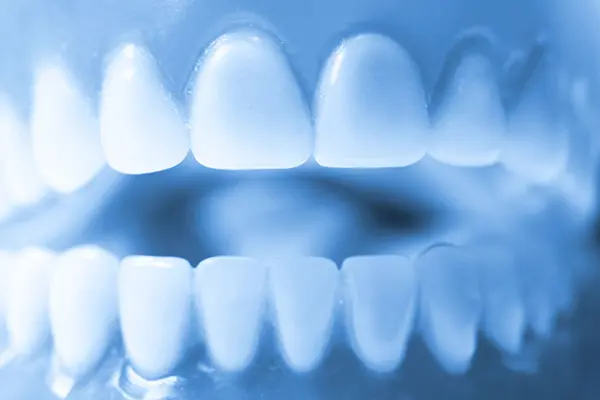New Material Absorbs Medicines to Combat Infection

03/01/2017
By Katharine Webster
If the human mouth is a sewer, then UMass Lowell chemistry Prof. Yuyu Sun is the chief sanitary engineer of dental appliances.
He’s already got patents on several anti-microbial additives for plastics, including one that prevents bacterial buildup inside dental tubing.
His latest project: designing dentures that can be infused with anti-fungal medications to treat denture-related stomatitis — inflamed, painful gums caused by a common yeast that builds up between the hard dentures and soft tissue. If left untreated, it can lead to open sores, systemic infection and even death.
Right now, some companies make dentures from material that incorporates an anti-fungal drug that is slowly released into the mouth. But after a few weeks, the drug is used up, and no more can be added. And drugs should only be given when they’re needed for an active infection, to prevent drug-resistant strains of yeast from developing, Sun says.
“Not everyone has a fungal infection, and if they have it, they don’t have it all the time,” he says.
So Sun took a different approach. He’s developed and patented a type of plastic that can absorb several different anti-fungal drugs or a combination of drugs. The drugs can be added if and when they’re needed, and once the stomatitis clears up, the dentures can be put in a quenching solution that neutralizes the drugs. The dentures also can be “recharged” with drugs if the infection recurs.
“We wanted a click-on, click-off feature,” he says. “Our strategy is to develop dentures without a drug. But if necessary, the dental appliance can be put into an anti-fungal solution, and it will bond with the medication and release it over time.”
His first patients will be veterans; because of combat conditions and injuries, as well as post-combat disabilities and higher rates of homelessness, they are more likely to wear dentures than civilians.
“A higher rate of disability can lead to poorer oral hygiene, which can lead to greater tooth loss and the need for dentures, particularly as they age,” Sun says.
Sun is working with Chih-Ko Yeh, a professor and geriatric dentist at the South Texas VA Health Care System who treats a large number of veterans with denture-related stomatitis. Together, they have received $1.5 million in grants from the National Institutes of Health and the Department of Veterans Affairs to pursue their research.
The next step? Manufacturing dentures using the patented plastic on the part that fits over the gums, and then trying them with patients. Sun hopes to be ready for clinical trials within five years and to win U.S. Food and Drug Administration approval soon afterward.
The project grew out of his earlier collaboration with Nuala Porteous, an associate professor in the School of Dentistry at the University of Texas Health Science Center at San Antonio. The pair had worked on dental tubing that absorbs an anti-microbial solution — and can be flushed and recharged periodically with more of the solution. The tubing resists the buildup of biofilm, a coating of microbes like the slimy film on your dog’s refilled, but unwashed, water bowl.
“She invited me to give a presentation there,” he says. “Afterward, a lot of dentists approached me and asked if I could apply it to other devices.”
When he started to study dentures, he realized he needed to collaborate with someone with expertise in fungal infections of the mouth, and Porteous recommended Yeh.
Sun is also working on an anti-microbial filling material for cavities — and another dental project he’s not ready to discuss. He’s helped develop anti-microbial fabric and paint, collaborating with faculty at UMass Lowell and elsewhere. It’s all part of his battle against preventable infections, and his weapons include a background in polymer chemistry and biomedical engineering.
“We’re developing new biomaterials and strategies to counter biofilms and microbes,” he says.
Since the human mouth is a sewer, it’s a great place to start.




